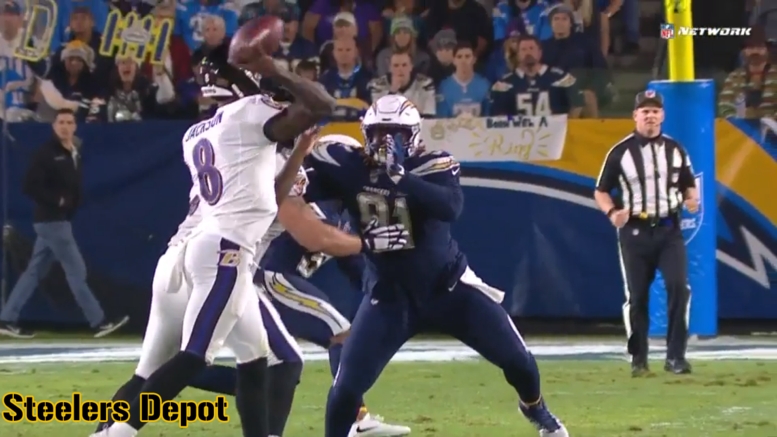The subject of the Baltimore Ravens’ offense and what it will look like by the time the regular season begins has been a topic of lively debate over the course of the offseason, and that hinges largely upon the assumptions made about how second-year quarterback Lamar Jackson will be deployed.
The 32nd-overall pick in the 2018 NFL Draft, Jackson was the fifth quarterback drafted, but the one who had the most tangible success last year in the most important column: wins and losses. He started the final seven games and went 6-1. But the team’s ability to turn around a 4-5 season with him in the lineup had much to do with opponents not knowing what to expect and prepare for him.
He end up breaking an all-time NFL record for the most rushing attempts over the course of a single regular season by a quarterback in history, which is pretty mindboggling considering that he was not a starter for even half a season, though he was used sporadically before that.
But while there has been a lot of talk about the offense being run-centric this year—they brought in Mark Ingram in free agency, retain Gus Edwards from last season, and drafted another running back relatively early—there still seems to be disagreement, even within the organization, about how much Jackson will throw.
Well, the quarterback himself weighed in on the debate, and echoed sentiments that he would be throwing the ball somewhat more significantly than he did as a rookie. Truth be told, though, that would not be a difficult task.
He averaged fewer than 23 pass attempts per game during his seven starts, which is a stunningly low number, though admittedly is still fewer than the number of pass attempts per start for Pittsburgh Steelers quarterback Ben Roethlisberger during his first two seasons. But that was a lifetime ago in the NFL, and he was averaging over 30 attempts by 2006.
That’s about where Jackson believes he will be in 2019, at about 30 passing attempts per game. That would still rank toward the very bottom of the league, but it would provide much more balance than last season, and the Ravens have endeavored to give him more weapons.
One player that he had already developed a rapport with, which has grown this year, is second-year tight end Mark Andrews, a third-round pick in the same class. Hayden Hurst, their first-round tight end, should be in for a much bigger year as well.
They also used first- and third-round picks on wide receivers Marquise Brown and Mile Boykin this year, retaining Willie Snead and Chris Moore from last season’s roster while adding Michael Floyd and Seth Roberts.
Jackson said the offense will be based around taking what the offense gives them, and that he doesn’t expect to have as many rushing attempts as last season. The question is, how will defenses respond? And once they do, will Baltimore have to adjust on the fly?








